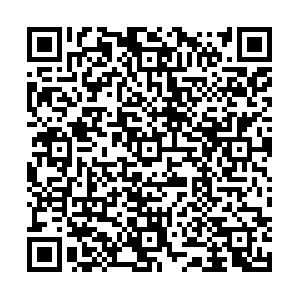|
[1]
|
Sabri 0, Zimny M, Schreckenberger M, et al. Characterization of therapy failures in radioiodine therapy of Grave's disease without antithyroid agents[J]. Nuklearnedizin, 2001, 40(1):1-6. |
|
[2]
|
Listewnik MH. Analysis of factors affecting treatment results for toxic goiter with radioactive 131I[J]. Ann Med Stetin, 2000, 46:109-121. |
|
[3]
|
Sabri 0, Zimny M, Schreckenberger M. Radioiodine therapy in Grave's disease patients with large diffuse goiters treated with or without carbimazole at the time of radioiodine therapy[J]. Thyroid, 1999, 9(12):181-188. |
|
[4]
|
Bockisch A, Jamizky T, Derwanz K. Optimized dose planning of radioiodine therapy of benign thyroidal diseases[J]. J Nucl Med, 1993, 34:1632-1638. |
|
[5]
|
Alexander EK, Larsen PR. High dose of (131)I therapy for the treatment of hyperthyroidism caused by Grave's disease[J]. J Clin Endocrinol Metab, 2002, 87(3):1073-1077. |
|
[6]
|
Berg GEB, Annika MK, Holmberg EC, et al. Iodine-131 treatment of hyperthyroidism:significance of effective half-life measurements[J]. J Nucl Med, 1996, 37(2):228-232. |
|
[7]
|
Hancock LD, Tuttle RM, Lmar H, et al. The effect of prpoylth-iouracil on subsequent radioactive iodine therapy in Gravesdisease[J]. Clin Endocrinol(Oxf), 1997, 47(4):425-430. |
|
[8]
|
Turton DB, Silverman ED, Skakir KM. Timeinterval between the last dose of propylthiouracil and 131I therapy in-flences cure rates in hyperthyroidism caused by Graves dis-ease[J]. Clin Nucl Med, 1998, 23(12):810-814. |
|
[9]
|
Allahabadia A, Daykin J, Sheppard MC, et al. Radioiodine treatment of hyperthyroidism-prognostic factors for outcome[J]. J Clin Endocrinol Metab, 2001, 86(8):3611-3617. |
|
[10]
|
Calegaro JV, Dfreitas Gomes E, Bae SH, et al. One-year follow-up of Grave's disease treatment by our different pro-tocols of radioiodine administration[J]. Panminerva Med, 2000, 42(4):241-245. |
|
[11]
|
Moka D, Voth E, Schicha H. Effects of antithyroid medication on the effective half-life and uptake of 131-iodine following radioiodine therapy[J]. Nuclearnedizin, 1997, 36(3):87-92. |
|
[12]
|
Hermans R, Bowillon R, Laga K, et al. Estimation of thyroid gland volume by spiral computed tomography[J]. Eur Radi-ol, 1997, 7(2):214-216. |
|
[13]
|
Wesche MF, Tiel van Buul MM, Smits NJ, et al. Ultrasonographic versus scintigraphic measurements of thyroid volume in patients referred 131I therapy[J]. Nucl Med Com-mun, 1998, 19(4):341-346. |
|
[14]
|
Lucas KJ. Use of thyroid ultrasound volume in calculating radioactive iodine dose in hyperthyroidism[J]. Thyroid, 2000, 10(2):151-155. |
|
[15]
|
Nygaard B, Hegedas L, Nielsen KG, et al. Long term effects of radioactive iodine on thyroid function and size in patients with solitary autonomously functioning toxic thyroid nodules[J]. Clin Endocrinol(Oxf), 1999, 50(2):197-202. |
|
[16]
|
Bringmann IM, Van Leeuwen BL, Hennemann G, et al. 0utcome of treatment of hyperthyroidism[J]. J Endocrinol Invest, 1999, 22(4):250-256. |
|
[17]
|
Yoshimoto M, Iino S, Yoshimura H, et al. A five-year follow-up of two different 131I treatment methods for Grave's disease and the factors affecting the outcome[J]. Nippon Naibunpi Gakkai Zasshi, 1994, 70(9):995-1006. |
|
[18]
|
Chiovato L, Fiore E, Vitti P, et al. Outcome of thyroid function in Grave's patients with radioiodine:role of thyroid-stimulating and thyrotropin-blocking antibodies and radioiodine-induced thyroid damage[J]. J Clin endocrinol Meteb, 1998, 83(1):40-46. |
|
[19]
|
Lesie WD, Peterely AE, Dupont JO. Radioiodine treatment outcomes in thyroid glands previously irradiated for grave's hyperthyroidism[J]. J Nucl Med, 1998, 39(4):712-716. |
|
[20]
|
Trainot AC, Martinot FD, Lazzert M, et al. Influence of thyroid volume reduction on calculated dose in radioiodine therapy of Grave's hyperthyroidism[J]. Phys Med Biol, 2000, 45(1):121-129. |
|
[21]
|
Estour B, Millot L, Vergely N, et al. Efficacy of low doses of radioiodine in the treatment of autonomous thyroid nodules:importance of dose/area ratio[J]. Thyroid, 1997, 7(3):357-361. |

 点击查看大图
点击查看大图




 下载:
下载: